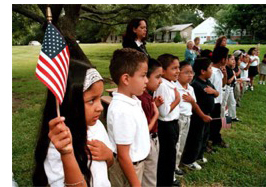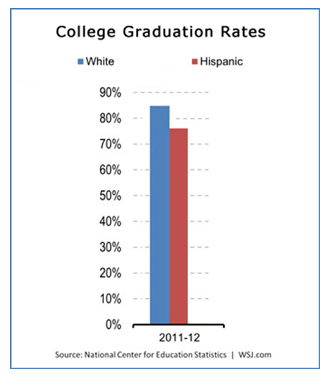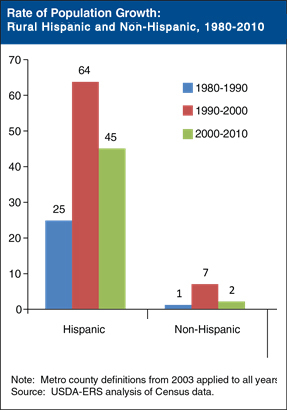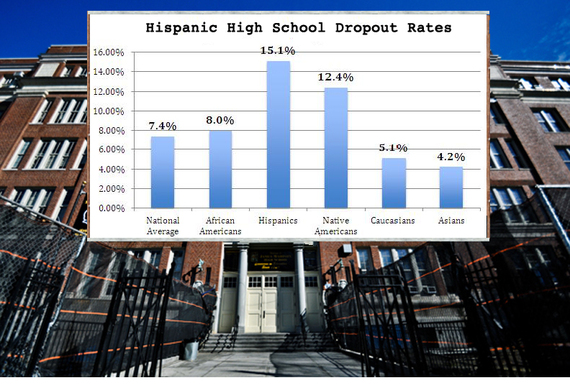It was 2:30am and the shelf above the  little girl's head cast a contrasting shadow on her biology book below, further straining her eyes as she mercilessly reread sentence after sentence only to forget what she had read in the first. The all too familiar sound of her immigrant father's work boots making their way down the staircase at 3:00am was the first indication that sleep was going to be a luxury if she ever managed to finish her weekly journal entry.
little girl's head cast a contrasting shadow on her biology book below, further straining her eyes as she mercilessly reread sentence after sentence only to forget what she had read in the first. The all too familiar sound of her immigrant father's work boots making their way down the staircase at 3:00am was the first indication that sleep was going to be a luxury if she ever managed to finish her weekly journal entry.
Assuming her lack of comprehension was a result of fatigue, she covered one eye with her hand and leaned closer to the page to see if the words made better sense, even though the results of routine eye exams safely concluded that distance was not an issue for her 20/20 vision. Distracted by the blue flash of her mother's uniform in the nearby kitchen, she forced a glance at the clock that unmistakably marked 4:30am and yet another ten-hour homework session. Letting out a sigh, she doubtfully placed her forehead between the pages in hopes that osmosis would defy the physical world.
In the backwoods of rural America, many children of impoverished Latino families unknowingly struggle with visual impairments that would otherwise be easily accommodated by suburban moms and attentive urban school principals. Surpassing African-Americans as the largest minority group in small town America as of 2010, Latinos and their visually impaired children are becoming increasingly difficult to assist because of cultural barriers and challenging bureaucratic procedures that were originally designed to treat an English-speaking citizenry.
Among a multitude of systemic gaps, observant parents play a crucial role in the early detection of their child's visual obstructions. They are the first line of defense and as such, require alternative solutions fit to serve current realities associated with the diagnosis and treatment of their pastoral children. Utilizing social media and mobile applications, these technological mediums can be readily transformed into diagnostic platforms that are easily accessible to even those located hours away from the nearest metropolis. With America's rural Hispanic population having more than doubled since 1990 and projected to exceed three million, even with a continued downward trend in Mexican immigration, the hope is to accommodate children who needlessly struggle with visual problems throughout their academic careers.
Is This Really a Problem?
Born high up in California's Sierra Nevada mountain range, the child squinting down at her textbook was a 21st century recipient of American Dream relics. Like many other neglected Hispanic students whose households are nestled in remote communities, she remembers waving to the short bus as she returned to an empty house because afternoon day care was too expensive for her full-time working immigrant parents. By the time she was in the first grade, homework meltdowns plagued her afternoons as she struggled to understand how her friends managed to get through an entire chapter in the time it took her to read a single page. Bleary-eyed and frustrated, she often sat alone at the kitchen table with her workbooks, unable to ask anyone for help who could understand the language used for her assignments.
No one in such a small community realized that over eighty percent of a child's relationship with the outside world stems from visual processing, or that sixty-five percent of the pathways to the brain are rooted in sight. With twenty ocular functions simultaneously cooperating to absorb and decipher images, the complex nature of eyesight often causes educators and parents to mistakenly rule out visual dysfunctions. After participating in routine school vision screenings that merely check for visual acuity, the bleary-eyed first grader's 20/20 vision meant that her underlying eyesight issue was left unchecked, leading to more exasperating learning struggles that lasted beyond her college years.
Many families conflate vision dysfunctions and neurodevelopmental disorders, when in fact both may occur simultaneously. Several symptoms and behaviors associated with learning disabilities, such as ADHD, are similar to those caused by vision problems. The Vision Council of America estimates that about eighty percent of children with a learning disability have an undiagnosed vision problem, while the American Public Health Association reports that twenty-five percent of children between kindergarten and the sixth grade have vision problems that are serious enough to obstruct the learning process.
The proportion of youngsters affected by optical complications further explains why this past decade alone has seen a nearly sixteen percent spike in the number of children suffering from disabilities, with non-neurodevelopmental vision impairments as an often overlooked subset of the six million disabled children nationwide. In relation to the Latino community, students from Spanish-speaking households are frequently misdiagnosed with behavioral and hearing disabilities that land them in unnecessary special education programs. Of the visually impaired children who go undetected and reside in areas like Northern California, impoverishment, low literacy rates, and their impractical proximity to professional resources dam any educational progress they might hope to achieve.
These students barely make it out of high school and the determined few who manage to get into college often drop out, as they are no longer able to compensate for their impairments when confronted with the increasingly stressful volume and rapid pace of university coursework. Just a quarter of Hispanic college students graduate on time and nearly half fail to obtain their degrees even after spending six years at universities that only require four years of classes. Unfortunately, many of them will never realize that their academic struggles could have been easily avoided had they been diagnosed and treated during their first few years of elementary school.
Several of these Hispanic students would have succeeded had their parents been aware of their learning disabilities much earlier. That being said, the voices of immigrant parents fall on deaf ears. In the early years of rearing a child, it may be difficult for any parent to identify the difference between their son's struggle with zippers and snaps and an impatience to go play. They may not recognize that their daughter's constant battle to find the right word is more than a mix-up between English and Spanish. This is especially challenging for parents who work irregular hours, have multiple jobs, extensive commutes, little formal education, and are unable to speak the same language that their child is being instructed in.
Lacking in academic achievement themselves, Latino immigrant parents often approach formal education with confusion and anxiety. Regarding higher education as a major cornerstone of competence and success for their own family, they are reluctant to question the expertise of educators. Consequently, engaging the agents of power within a school system or questioning a doctor's assessment of visual acuity present a major hurdle for them, as they feel they lack the intellectual tact and language prowess to settle their concerns.
In addition to traversing the social landscape of the school and doctor's office, the cultural aversion to the very notion of a learning disability by many Latino parents makes it even harder to flag impairments that are subtle and yet easily accommodated. A 2012 University of California - Davis study regarding Autism Spectrum Disorders (ASD) in Hispanic and Non-Hispanics speaks to this anomaly in finding that "ADHD, as well as other forms of developmental disabilities, are not recognized as disorders per se in the Hispanic population, possibly related to cultural differences in expectations for child behavior and parenting practices; hence, diagnosis and treatment are not sought." When symptoms are not considered severe, Hispanic parents usually attribute communication difficulties to personality or immaturity, inadvertently destroying any foundational building blocks their child needs to learn in today's classroom.
This same parenting style exposes the Latin emphasis of obedience and respect for adult authority, which delivers more parental directives than dialogue and becomes an obstruction to the engagement of their child's curiosity. The all too common inability to share bedtime readings in English, along with traditional misconceptions about learning disabilities, contribute to the mistaken notion that hard work will offset their child's struggles. It is this compilation of factors that caused the parents of the distressed student in rural California to bypass her slight visual dysfunction, jeopardizing her academic success and further diminishing her self-confidence.

When the dependability of Latino parents is questioned, the problem then becomes our expectations of schools with vague guidelines and limited resources to properly diagnose and treat visual problems. At present, our rural schools are not equipped to overcome the shortcomings of immigrant families who tirelessly work to provide their children with the best possible education under circumstances that subvert their efforts. The Journal of Pediatrics also recognized this gap when concluding that the process of identification and accommodation is completely subject to local variation in expertise, school funding, and individual state board of education definitions of learning disabilities. Latinos in California are now the state's majority ethnic group. Yet, the only procedural statute calling for the early detection of learning disabilities in public schools was drafted when the Hispanic population was just twenty-one percent. It entirely fails to mention the particular procedures needed to spot learning disabilities in children from immigrant backgrounds.
 Though America's school system is designed to track developmental milestones, it readily misses symptoms like those appearing at 2am in that secluded Sierra Nevada home. Instructors are usually trained to detect symptoms of speech fluidity and motor skill impediments that inhibit various life functions and classroom learning. If a child falls behind, there is a laundry list of supposedly available screening activities, referrals, pediatric visits, and psychoeducational evaluations aimed at the eventual development of customized education plans designed to accommodate each disability. Nevertheless, when telltale symptoms of non-neurodevelopmental visual dysfunctions are coupled with a multitude of socioeconomic, cultural, and linguistic barriers, these options fall completely out of arms reach.
Though America's school system is designed to track developmental milestones, it readily misses symptoms like those appearing at 2am in that secluded Sierra Nevada home. Instructors are usually trained to detect symptoms of speech fluidity and motor skill impediments that inhibit various life functions and classroom learning. If a child falls behind, there is a laundry list of supposedly available screening activities, referrals, pediatric visits, and psychoeducational evaluations aimed at the eventual development of customized education plans designed to accommodate each disability. Nevertheless, when telltale symptoms of non-neurodevelopmental visual dysfunctions are coupled with a multitude of socioeconomic, cultural, and linguistic barriers, these options fall completely out of arms reach.
The distressed first grader whose parents remained unaware that such lengthy study sessions were abnormal, later survived the whole of middle school after her determined Algebra instructor amassed suspicion that a lack of intelligence was not to blame for her poor standardized test scores. Utilizing a personalized form of cryptography and an extra hour of afterschool instruction for a year to compensate for her difficulties, the girl's rout memorization of common instructional phrases eventually increased her mental processing speed and accuracy. But without the opportunity to observe her study habits at home or even in other courses, it was reasonable for her Algebra instructor to assume that math was the problem, not a visual impairment. "Without adequate parental involvement," explains Mark Guiberson, Professor of Early Childhood Language at the University of Wyoming, "it is difficult for school professionals to fully understand a child's development and thus determine whether a child's behavior is reflective of cultural and linguistic differences or a developmental difficulty." This explains why the girl's Algebra instructor subsequently handed her parents a brochure on test anxiety, assuming that nerves were the sole cause of her paralyzed disposition and lack of retention after continuously rereading exam instructions.
Without a sweeping set of protocols to follow or the aid of a qualified teaching assistant, any overworked instructor maneuvering through an overcrowded classroom, using resources purchased with their own salary, might have presumed that this student was simply facing ESL challenges. If not a language barrier, a lack of raw intelligence or work ethic might have replaced suspicions of learning disabilities associated with visual impairments, such as dyslexia or dyscalculia. Luckily enough, the girl's devout Algebra instructor saw past these possible answers and instead made a less severe personal diagnosis.
 Most students lack the fortitude to survive such an ordeal. Fewer are likely to encounter dedicated teachers with such inventiveness. They are among the fourteen percent of U.S. Hispanics who drop out of high school, the highest rate of any other ethnic group in the country. The data shows that such failures are preventable when children that have learning disabilities reside in large cities with native-born affluent parents. Dr. Amy Houtrow, the lead author of the National Health Interview Survey conducted by the Centers for Diseases Control and Prevention and Associate Professor at the University of Pittsburg School of Medicine, cites increased access to healthcare and a readiness to seek treatment as primary reasons for the rise in the number of children living in high income communities who are diagnosed with learning disabilities. By that token, there has not been a similar rise for children living below the federal poverty line.
Most students lack the fortitude to survive such an ordeal. Fewer are likely to encounter dedicated teachers with such inventiveness. They are among the fourteen percent of U.S. Hispanics who drop out of high school, the highest rate of any other ethnic group in the country. The data shows that such failures are preventable when children that have learning disabilities reside in large cities with native-born affluent parents. Dr. Amy Houtrow, the lead author of the National Health Interview Survey conducted by the Centers for Diseases Control and Prevention and Associate Professor at the University of Pittsburg School of Medicine, cites increased access to healthcare and a readiness to seek treatment as primary reasons for the rise in the number of children living in high income communities who are diagnosed with learning disabilities. By that token, there has not been a similar rise for children living below the federal poverty line.
It comes as no surprise that this exact situation unknowingly burdened the now rural high schooler. Her dispirited intuition that she was not smart enough to compete with her friends and fear of unavoidable failure would only start to wane after she received an acceptance letter from a respected university.
There Must Be Someone Taking Care of This
It is no secret that early childhood intervention greatly increases a student's chance of academic success. Yet, most educational initiatives are simply not looking for visual problems like those that force a child to spend hundreds of hours learning well-intentioned, but ultimately erroneous coping mechanisms. Public and privately funded programs that are created to address learning disabilities often identify only the most obvious vision dysfunctions or more commonly, attempt to prevent them from occurring entirely. Project FLAME (Family Literacy, Apprendiendo, Mejorando, Educando), a wonderful family literacy initiative stationed in ten different states, welcomes Latino children aged two to eight who have parents with limited English proficiency. Offering droves of other supportive resources, the project lacks comprehensive vision screenings for program participants. Other initiatives, such as the privately funded San Antonio-based strategy ADVANCE, admits Latino children up to the age of three and integrates the benefits of preventative family-centered services for low-income Latino families. However, because ADVANCE and similar programs are usually employed in densely populated urban areas where the largest portions of Latino families can be found, they leave rural students where they are -- in unchartered territory, overlooked and neglected.

Educational initiatives that lie within a reasonable distance from isolated rural homes still largely fail to address lesser-known visual impairments that threaten learning. Located in another rural town only thirty minutes away from the small schoolroom where a daring teacher concocted a new language for a first-generation Latina, America's publically funded Head Start program would have seemingly been the ideal place to help her close the achievement gap. But even if a free and reliable source of daily transportation existed to carry her to and fro until the cutoff age of five, the ambitious government-run program that includes dental, vision, and medical screenings, parental involvement, an emphasis on nutrition, and robust family support services still does not take into account one significant factor: certain learning disabilities, like those resulting from a visual impairment, cannot be detected at such a young age.
A 2010 Brazilian study, Early Detection of Visual Impairment(s) and it's Relation to Academic Performance, noted that the human "optical system continues to develop after birth, reaching its maturity at around seven years of age." Unbeknown to Head Start and the large swathes of the nation's poor and disabled that it serves, a child's optimal vision sophistication and its relationship to the mastery of tasks like reading, is extremely difficult to interpret during preschool and the early grades of elementary school. It goes to show that regardless of whether existing initiatives are well funded and staffed, their age ranges and lack of comprehensive vision examinations make it difficult to measure the extent to which rural Latino children are disproportionately affected by undiagnosed visual impairments.
As part of this affected population, the bleary-eyed girl from Northern California only realized that a visual impairment was to blame two years after graduating with a B.A. degree. Having previously been told of her abysmal standardized test scores from the GRE graduate school exam, a past professor made the startling discovery that her old academic struggles were directly attributed to a physical dysfunction. His research revealed that the exam's time constraints had dramatically lowered her test scores. Citing numerous experts in a follow-up email, his findings were irrefutable: "Dr. Lynn Hellerstein, a Developmental Optometrist and Past President of the College of Optometrists in Vision Development, reported that 'A three year study of 540 children found that those children who had visual perceptual and eye movement difficulties did poorly on standardized tests.'"

Considering this study's relevance, how would a poor rural immigrant parent ever have become aware of it? This student was lucky enough to have an instilled indomitable will to pull herself from the cracks in which she slipped through unnoticed. Though, even if there were no language barrier standing between her immigrant parents and her schoolwork, it is still questionable whether or not they would have tagged her as having a visual impediment. It would still take sufficient understanding of the learning process to deduce that a failing report card and long frustrating homework sessions might be symptomatic of a visual problem.
Where the Rubber Meets the Road
By capitalizing on the ambitions of rural Hispanic families who are eager to advocate for their children when given the chance, current technologies embedded in social media and mobile applications can alter the future of struggling students. A 21st century initiative that seeks to bypass the practically endless obstacles involved with navigating cultural and bureaucratic mazes will provide parents with a means to detect, and therefore unlock, the academic potential of rural first-generation students.
Given the recent surge in Latinos using the Internet, online Facebook quizzes and smartphone applications could drastically alter the way their children with vision problems are diagnosed. A 2013 Pew Research Study showed that among America's 55 million Hispanics, forty-six percent of foreign-born Internet users regularly visit Twitter, Facebook, and other social networking sites. A separate advertising study conducted by Unilever, Mindshare, and ShareThis found that Hispanic consumers were twice as likely to share content on the Web. On average, they share five times more than non-Hispanic users and their shared content is "thirty-five percent more likely to be clicked on than content shared by" non-Hispanic users. With these numbers increasing in relation to the growth of the Latino population, the creation of a diagnostic social media learning disability app makes that much more sense.
Thinking back to the reluctance of Hispanic parents to consider visual impairments as the possible cause of their child's academic struggles, bilingual online quizzes could target Latino parents in culturally sensitive ways. After creating an online profile of their child's symptoms and possible vision dysfunctions, they could embark on a zip code driven search to a nearby diagnostic facility, thereby putting non-neurodevelopmental impairments such as vision dysfunctions on their parenting radar.
Adaptive learning applications have soared in response to the rise in identifiable learning disabilities, yet there is a severe shortage of diagnostic platforms that earmark preludial visual obstructions. If not a solution based on social media, a free mobile application that condenses the same information into one culturally sensitive program could just as easily capture the attention of Latino parents. Offered as a free component of public education that is tailored to suit the unique needs of America's rural Latino population and their impoverished non-Hispanic neighbors, these new social media apps could lead the fight in the early diagnosis of vision problems and help eliminate the worsening of more severe learning disabilities in pastoral children.
While many bemoan the sorry state of rural education, especially among the poor, the deleterious impact of undiagnosed learning impairments inside the rapidly growing Latino rural community has largely been overlooked by educational reformers. Without serious consideration of institutional protocols that address their unusual circumstances, Hispanic high school dropout rates will remain the highest in the country and college completion by first-generation students will merely survive as dismal. Unaccompanied by the adoption of fresh approaches that harness the accessibility of the Internet and the enthusiasm of its adult Latino users, solutions will remain as impermeable as that bleary-eyed girl's biology homework.
Academic success should not have to rely on the same stubborn determination of the squinting preschooler who was forced to climb over a slew of unnecessary impediments. Although she no longer has to employ cryptology in order to write the sentences that you have just read, there are children all over the country who are attempting to overcome the same hurdles that turned her once-playful childhood into a laborious chore. Unless we use the ready resources available to Latino children who are currently struggling to school themselves out of the impoverished and unseen enclaves of rural America, many will stumble without ever knowing that their obstacles are failures of neglect, not intellect.




